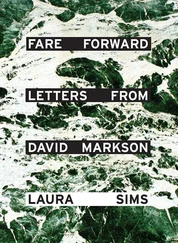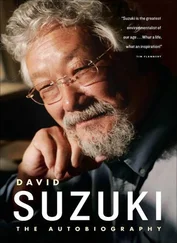On his approach, Yukie had turned to face him and bowed, eyes down, hands clasped before her, manga book still in hand but now firmly closed. “Professor Matsuda-san. I thank you for the meeting.”
Matsuda had nodded in return. “You have asked me for the French professor’s address. I have tried to contact him to gain his permission, but he has not responded. He has also missed several classes and appointments, and that has caused some worry. I agreed to meet you because I fear that something tragic has happened to him and thought that you might perhaps have some information that could ease my worry.”
“My Canadian friend was staying at his house. She emailed me that the professor had left the house and not returned for days, but now she no longer answers my emails, my texts, my phone calls, and so I am worried about her as well. I try not to imagine all the things that I can imagine. I must go to that house and see what the reality there is.”
Matsuda picked up a book and nervously hefted it in his hand without looking at it. “You will not see any reality in that house,” he said. He turned to Yukie with a disturbed, clenched smile. “Strangely, the house is owned by the Japanese Collective of Medical Entomology. Why they would need such a house I have no idea, but it was provided to the philosopher as a courtesy, I understand, by the collective itself, as arranged by the Department of Philosophy at Todai.” He turned to go, momentarily forgetting that he had a book in his hand, then turned back. As he replaced the book, he muttered, “Of course, the philosopher was for some reason interested in the use of entomological warfare in China during World War Two.” He shook his head in dismay. “Airplanes spraying plague-infected fleas and flies onto an unsuspecting populace. He mentioned to me that the North Koreans still allege that during their war with the South, the Americans and their new allies the Japanese conspired to bring Japanese entomological warfare to the Korean peninsula. A strange coincidence.”
Yukie was dazzled by the twists and turns, sensing a wonderful story with international weight but not at all certain she could connect the dots. “Professor-san, are you suggesting that there is a link between the renting of the house from the collective and the sudden absence of our colleagues? What could that possibly be?”
Matsuda did not smile. “And will you also be turning this affair into a publicity circus?”
It was uncharacteristic of Matsuda to be so blunt, not to mention vengeful, and Yukie took it as an indication that there was something complex and worrisome about Arosteguy’s disappearance that went deeper even than the French domestic murder scandal. She immediately thought that Naomi was dead and that Arosteguy had killed her, but for reasons that had nothing to do with sexual passion or deviancy. She could not fathom what those reasons could be.
“I would just like to have my friend Naomi back,” she said.
AND SO YUKIE FOUND HERSELF standing in front of the open gate of the Arosteguy house taking photos, like a tourist, she thought, at the Bates Psycho house on the Universal Studios back lot in Hollywood (as she had actually been at the time of Naomi’s Santa Monica escapade)—a very unwelcome association. Though her new Sony RX1 camera was renowned for its low-light capability and she was eager to exploit this, she had waited until the morning after her “accidental” meeting with Matsuda to go to the Arosteguy house, wanting the fullest of full daylight surrounding her. Still, once she had documented the garbage-strewn front garden and slid open the unlocked front door, she found darkness waiting for her in the house, and soon she was shooting at the widest aperture, f/2.0, with Auto ISO all the way up at times to 6400 at the camera’s preferred shutter speed of 1/80 of a second. The widest, most open, most accepting aperture, the one providing the narrowest, most demanding depth of field. She and Naomi had joked about the sexuality of camera apertures, that they needed to write a woman’s monograph on the symbolism and cultural relevance of the mechanics of image-making as it related to sex, so that, for example, stopping down the fixed 35mm lens’s diaphragm—elegantly composed of nine leaf-shutter blades—to a tight f/16 would be the equivalent of executing a Kegel pelvic floor exercise. But beyond that, she had learned so much about photography from her friend, and here she was, using that knowledge to document this house, which was filling her camera with its devastating atmosphere of Japanese urban despair reflecting her own; the camera was inhaling it through that lens aperture, and would exhale it into Yukie’s flat from the screen of her computer when she got home again.
A 35mm lens did not give you a very wide perspective—it was certainly not a lens for architecture—and so Yukie, wanting to document every cubic meter and to disturb nothing, began to combine shots in Panorama mode in order to deliver something of the cramped, stingy scale of the place, and alternated this with rotating the middle ring on the beautiful Carl Zeiss lens into its macro focusing position so that she could get very close to the details, which, she hoped, on study back home, would divulge some clues as to what had emptied the house of its two mysterious gaijin . There was no immediate evidence of the house having been professionally tossed or rumbled, though certainly it was a mess; random drawers had been left hanging open, tubes and jars left unsealed, books and papers strewn everywhere among empty bags of ramen noodles and chips. On the other hand, there were no electronic devices to be found anywhere, other than the modest TV set and its controller and set-top box. No computers, iPads, cell phones, hard drives, laptops, or chargers, cables, or peripherals for any of the same, and this was beyond what could be construed as normal; you might take a couple of devices with you on leaving your house, but not your desktop, not your fax machine (still a force in Japan, unlike the West), not your printer.
As she made her way up the cabinet-like stairway, she could not keep her paranoia completely in check. Would it be Naomi who came streaming out of a second-floor doorway and down the stairs towards her, carving knife raised high, violins stabbing away with predatory beaks, or would it be Arosteguy himself, squeezed into one of Naomi’s dresses, an old-lady wig insanely askew on his head? That was almost preferable to what there actually was: nothing and nobody. Once safely upstairs, Yukie could smell Naomi everywhere, and there were traces of her—underwear, makeup—in every corner, like the kind she had left in Yukie’s apartment, sheddings of her skin that could not have been accidental, that were assertions of Naomi’s existence, claims of territorial possession. She would come back someday, they said. Don’t forget me.
Yukie was not familiar with the neighborhood surrounding Arosteguy’s house, but the unlocked door might not indicate anything unusual; on the other hand, given Naomi’s growing paranoia as expressed in her emails, it did seem strange that the door wasn’t locked.
As Yukie walked away from the house, she turned one last time to photograph it from some distance down the street, which, like the house itself, displayed only provocative traces of people—bicycles with frontmounted wire-mesh baskets tilted on their kickstands, odd-sized wooden planks lashed together and leaning against a doorway, potted plants randomly placed on the roadway’s narrow curb—but no people themselves.
Maybe the story was the story of the house, a house owned by Japanese insect scientists and rented to a fugitive French philosopher. Maybe that was the story.
“MEANT TO ASK YOU: Where is Célestine’s left breast? Omi.”
Читать дальше
Конец ознакомительного отрывка
Купить книгу







![David Jagusson - Fesselspiele mit Meister David [Hardcore BDSM]](/books/486693/david-jagusson-fesselspiele-mit-meister-david-har-thumb.webp)




